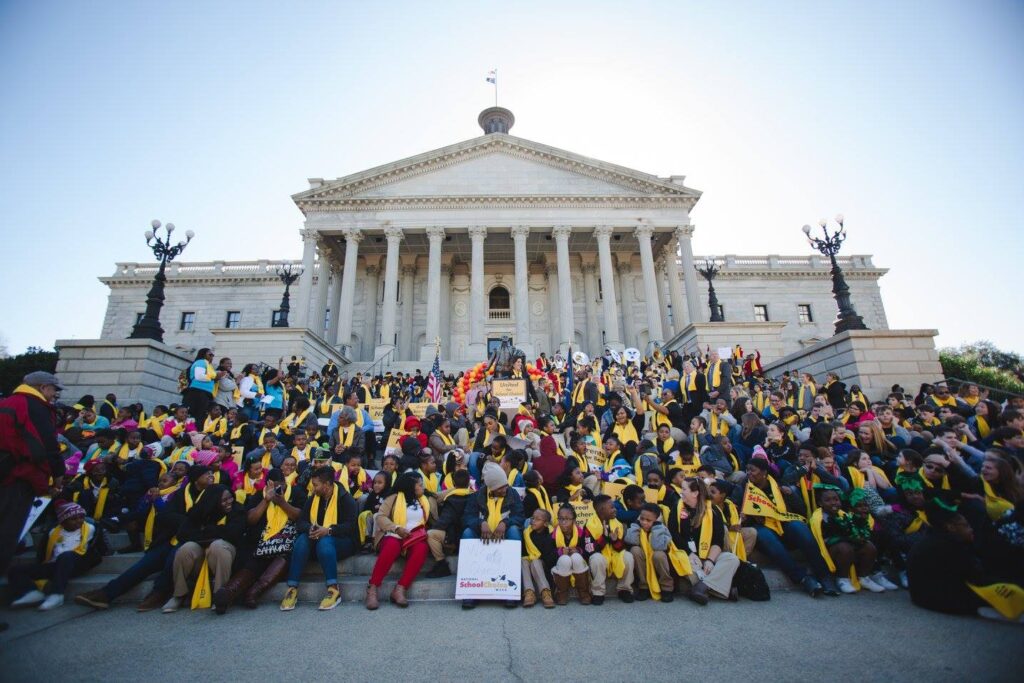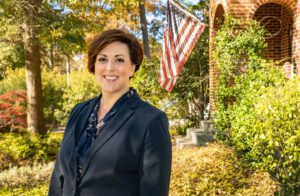More states make progress on school choice
(The Daily Signal) – Several states are making progress in empowering their citizens with access to education freedom and opportunity.
Earlier this month, Alabama became the 15th…

(The Daily Signal) – Several states are making progress in empowering their citizens with access to education freedom and opportunity.
Earlier this month, Alabama became the 15th state in the nation to enact a program providing education savings accounts and the 10th state to enact universal education choice.
Last week, South Carolina and Louisiana took steps to become the 11th and 12th states to make every K-12 student eligible for education choice.
The South Carolina House of Representatives voted 69-32 on Wednesday to pass a bill to expand eligibility for the state’s education savings account policy to all K-12 students. Eligibility is currently limited only to students from low-income families.
South Carolina Superintendent of Education Ellen Weaver celebrated the bill’s passage in the House, calling it “a HUGE step forward” in a post on X and “a win for students and families.”
That same day, the Louisiana Senate’s Education Committee voted 5-2 to advance a bill that would create a scholarship program called Louisiana Giving All True Opportunity to Rise, or LA GATOR.
The bill, SB 313, is sponsored by state Sen. Rick Edmonds and is the companion bill to HB 745 in the House, sponsored by state Rep. Julie Emerson. Both are Republicans.
Louisiana’s new Republican governor, Jeff Landry, campaigned on school choice and his education council proposed that state policymakers should, among other goals, “Ensure that parents are granted flexibility in their child’s education.”
Three other states also are making progress on school choice, although their proposals are not as robust as in Alabama, Louisiana, South Carolina, or a dozen other states.
Wyoming
With Gov. Mark Gordon’s signature last week, Wyoming became the 16th state in the nation to adopt an education savings account policy. With an ESA, families may choose learning environments that align with their values and work best for their children.
In the Cowboy State, families will be eligible for $6,000 to use for private school tuition, tutoring, textbooks, school supplies, online learning, and more.
This is a small but significant step in the right direction. It could have been a much larger step, however.
The bill sent by the Legislature to the Republican governor made families eligible for an education savings account if they earned up to 500% of the federal poverty level, or $156,000 for a family of four. That’s the equivalent of the combined average salaries of a Wyoming firefighter married to a registered nurse.
However, Gordon used his line-item veto to modify the eligibility criteria so that families are eligible only if they earn no more than 150% of the federal poverty level, or just $46,800 for a family of four. That means that the typical nurse or firefighter alone wouldn’t qualify.
In his letter explaining his veto, Gordon said a provision of the Wyoming Constitution requires that such programs be limited to the poor. Article XVI, Section 6 states that neither the state nor any local government shall “[l]oan or give its credit or make donations to or in aid of any individual, association or corporation, except for necessary support of the poor.”
However, education savings accounts are neither loans nor donations, but rather a fulfillment of the state’s constitutional obligation to provide citizens with educational opportunities.
As Article I, Section 23 of the Wyoming Constitution declares: “The right of the citizens to opportunities for education should have practical recognition.” No other policy yet devised provides families with greater educational opportunities than education savings accounts.
Georgia
The Peach State is on the cusp of becoming the 17th state to offer education savings accounts.
Last year, 16 Republican state legislators voted against a bill to create education savings accounts. This year, eight of those recalcitrant Republicans switched their votes to support the education choice bill.
After the bill passed both chambers in slightly different forms, a conference committee resolved differences and sent the bill to Gov. Brian Kemp’s desk for his signature. Kemp is expected to sign it soon.
Unfortunately, the conference committee failed to fix the proposal’s flawed “failing schools” eligibility criteria.
The Georgia Promise Scholarship Act would limit eligibility to K-12 students assigned to the lowest-performing 25% of district schools in the state. As I noted earlier this month, the “failing schools” model for an eligibility mechanism is unsound:
First, a child’s access to a quality education should not depend on the average performance of a nearby district school. A school that is high performing on average nevertheless may not be the right fit for a particular child who is assigned to it.
Why should a child’s access to a quality education be dependent on the average level of performance of his or her peers in that school?
Second, the “failing schools” model is unnecessarily confusing for parents. Parents often don’t know if they live in an area where their students are eligible.
Moreover, as district schools frequently move in and out of the bottom 25%, the eligible zones also will shift frequently, making it even harder for parents to keep track of which areas are eligible. It will be incumbent upon local school choice groups to ensure that families know about their education options.
Three years ago, Kansas state lawmakers changed eligibility for their state’s education choice policy from a “failing schools” model to a means-tested one, precisely for these reasons.
After learning this lesson in the school of experience, Georgia lawmakers probably will do likewise in the coming years.
New Hampshire
Earlier this month, the New Hampshire House of Representatives narrowly passed a bill to expand eligibility for the state’s Education Freedom Accounts.
Eligibility currently is limited to students from families earning up to 350% of the federal poverty level, or $109,200 for a family of four. Under HB 1665, sponsored by state Rep. Glenn Cordelli, a Republican, students from families earning up to 500% of the federal poverty level, or $156,000 for a family of four, would be eligible.
That’s about the equivalent of the income of a typical commercial pilot married to a typical school counselor in New Hampshire.
In his annual State of the State address, New Hampshire Gov. Chris Sununu, a Republican, encouraged the state Legislature to send the bill to his desk in the state capital, Concord.
The state’s families, Sununu said, “are singing the praises of Concord for finally passing Education Freedom Accounts which are now ranked as the most effective and popular school choice program in America–and why passing HB 1665 to expand this program is a great opportunity for families.”
“Let’s get it done!” the governor urged.
Sununu is right to highlight the popularity of the education choice policy. According to the most recent monthly tracking poll by Morning Consult, education savings accounts have the support of two-thirds of Granite State citizens as well as three-fourths of parents of K-12 students.
New Hampshire parents are voting with their feet. Over the past academic year, the number of Education Freedom Accounts has grown a whopping 58%, from 3,025 accounts awarded in 2022-23 to 4,770 in 2023-24. That’s more growth per capita than any other state nationwide.
The state Senate will soon hear the bill, but local school choice advocates are concerned about rumors that some senators are looking to scale back the eligibility expansion. Such a move not only is unlikely to persuade any opponents of school choice to support Education Freedom Accounts, but it is also guaranteed to reduce public support.
In addition to souring supporters of the expansion bill who suddenly would discover that their children no longer were going to be eligible, studies repeatedly have shown that the public favors universal eligibility over targeted eligibility.
The organization EdChoice’s most recent Schooling in America survey found that 76% of the public supports education savings accounts that are available to all families, regardless of income, while only 54% support ESAs that are targeted based on financial need.
Some have argued for limiting program enrollment as a cost-saving measure, but—at best—that’s pennywise and pound foolish. The average value of an Education Freedom Account is currently $5,255, barely one-quarter of the average cost of over $20,000 per pupil enrolled in New Hampshire’s district schools.
Instead of curtailing the proposal, state lawmakers should go all in by making the education savings accounts available to all.



